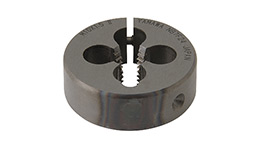
Nov . 05, 2024 13:15
Back to list
gas heat exchanger
Understanding Gas Heat Exchangers Efficiency and Applications
Gas heat exchangers play a crucial role in various industrial applications, providing efficient heat transfer between gas streams. They are essential components in systems where waste heat recovery, energy efficiency, and temperature control are paramount. This article explores the principles of gas heat exchangers, their types, applications, and benefits.
What is a Gas Heat Exchanger?
A gas heat exchanger is a device designed to transfer heat between two or more gas streams without mixing them. The primary function of a heat exchanger is to maximize energy efficiency by recovering heat from exhaust gases and reallocating it to incoming gas streams. This process not only optimizes energy use but also reduces operational costs and environmental impact.
Working Principles
Gas heat exchangers operate on the principle of thermal conduction. Hot gases pass through the heat exchanger, transferring heat to a cooler gas that either moves in parallel or counter to the hot gas flow. The efficiency of heat transfer depends on several factors, including the temperature difference between the gases, the surface area of the heat exchanger, and the properties of the materials used in its construction.
Types of Gas Heat Exchangers
There are several types of gas heat exchangers, each suited for specific applications
1. Shell and Tube Heat Exchangers These consist of a series of tubes, one set carrying the hot gas and the other the cold gas. They are widely used due to their robustness and efficiency in high-pressure applications.
2. Plate Heat Exchangers Comprising multiple thin plates stacked together, these exchangers provide a large surface area for heat transfer in a compact design. They are ideal for applications with lower gas flow rates and can handle multiple streams.
3. Air-to-Air Heat Exchangers Common in HVAC systems, these heat exchangers transfer heat between two air streams, effectively recovering heat from exhaust air to preheat incoming fresh air.
4. Regenerative Heat Exchangers These devices store heat temporarily in a solid medium before transferring it to the incoming gas stream, making them efficient for cyclic processes.
Applications of Gas Heat Exchangers
gas heat exchanger

Gas heat exchangers are employed across various industries, including
- Power Generation In power plants, heat exchangers are used to recover heat from exhaust gases, improving the overall efficiency of the system.
- Chemical Processing These devices play a critical role in maintaining optimal temperatures for reactions, maximizing yield and minimizing energy consumption.
- Oil and Gas Heat exchangers facilitate heat recovery in drilling operations and refining processes, reducing energy costs and emissions.
- HVAC Systems In buildings, they help reduce energy consumption by recovering heat from exhaust air for use in heating fresh air.
Benefits of Using Gas Heat Exchangers
The adoption of gas heat exchangers brings numerous advantages
1. Energy Efficiency By recovering waste heat, industries can significantly reduce their energy costs and reliance on external energy sources.
2. Cost Savings Lower energy consumption directly translates to reduced operational expenses, making heat exchangers a wise investment for businesses.
3. Environmental Impact Improved energy efficiency contributes to lower greenhouse gas emissions, supporting sustainability goals.
4. Process Optimization By maintaining optimal temperatures within processes, gas heat exchangers enhance product quality and operational reliability.
Conclusion
Gas heat exchangers are essential for boosting energy efficiency and optimizing processes across various industries. By facilitating effective heat transfer between gas streams, they contribute to substantial cost savings and reduced environmental impact. As technology advances, the development of more efficient gas heat exchangers will continue to play a pivotal role in driving industrial innovation and sustainability. Understanding their principles, types, and applications empowers industries to harness the full potential of waste heat recovery, making a positive impact on both the economy and the environment.
Next:
Latest news
-
Safety Valve Spring-Loaded Design Overpressure ProtectionNewsJul.25,2025
-
Precision Voltage Regulator AC5 Accuracy Grade PerformanceNewsJul.25,2025
-
Natural Gas Pressure Regulating Skid Industrial Pipeline ApplicationsNewsJul.25,2025
-
Natural Gas Filter Stainless Steel Mesh Element DesignNewsJul.25,2025
-
Gas Pressure Regulator Valve Direct-Acting Spring-Loaded DesignNewsJul.25,2025
-
Decompression Equipment Multi-Stage Heat Exchange System DesignNewsJul.25,2025

